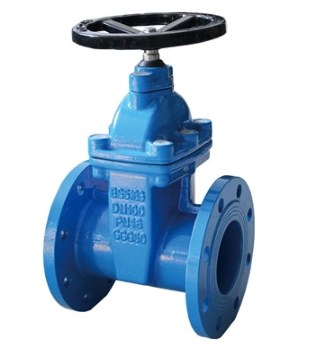The sealing mechanism of a gate valve is achieved through the interaction between the gate and the seats within the valve body. Here’s how it works:
When the gate valve is in the fully open position, the gate is raised completely, allowing unobstructed flow through the valve.
As the gate is lowered to close the valve, it comes into contact with the seats, which are located on either side of the gate within the valve body.
The seats are designed to provide a tight seal when the gate is fully closed. They are usually made of resilient materials such as rubber or elastomers, which can deform slightly to create a seal against the gate.
When the gate is lowered, it presses against the seats, compressing them against the gate and forming a seal that prevents fluid from passing through.
The pressure of the fluid helps to enhance the sealing mechanism. As the fluid pressure increases, it forces the gate tighter against the seats, increasing the seal integrity.
It’s important to note that the gate valve achieves a bi-directional sealing, meaning it can provide a seal in both flow directions. This makes gate valves suitable for applications where a tight shut-off is required to prevent backflow or leakage.
Proper maintenance and periodic inspection of the gate valve’s seats and gate are crucial to ensure the sealing mechanism remains effective. Over time, wear or damage to the seats or gate can compromise the seal, leading to leakage.
What maintenance and servicing practices are recommended for gate valves?
Proper maintenance and servicing practices are essential to ensure the optimal performance and longevity of gate valves.
Here are some recommended practices:
Regular Inspection: Perform periodic visual inspections of the gate valve to identify any signs of damage, wear, or leakage. Inspect the valve body, bonnet, stem, gate, seats, and seals for any abnormalities.
Lubrication: Gate valves typically require lubrication to ensure smooth operation and prevent corrosion. din3202f4&f5 gate valve Follow the manufacturer’s guidelines and apply appropriate lubricants to the stem, gate, and other moving parts as recommended.
Exercise the Valve: Regularly exercise the valve by opening and closing it fully. This helps prevent the gate and seats from becoming stuck due to sediment or debris buildup.
Clean the Valve: If there is any visible debris, sediment, or scaling on the gate or seats, clean them carefully using appropriate methods. Avoid using abrasive materials or harsh chemicals that could damage the valve components.
Seal Replacement: Over time, the seats and seals of gate valves may wear out or become damaged. When necessary, replace these components following the manufacturer’s recommendations and using compatible materials.
Stem Packing Adjustment: Gate valves often have stem packing to prevent leakage along the stem. If the valve is leaking from the stem area, adjust or replace the packing as needed to ensure a proper seal.
Corrosion Protection: Gate valves that are exposed to corrosive environments may require additional corrosion protection measures. Consider applying protective coatings or using corrosion-resistant materials for the valve components.
Valve Operation Records: Maintain records of valve operation, including maintenance activities, inspections, repairs, and any issues encountered. This documentation can help track the valve’s performance history and aid in future maintenance planning.
Training and Qualified Personnel: Ensure that maintenance and servicing tasks are performed by trained and qualified personnel who understand the specific requirements of gate valves.
Follow Manufacturer’s Guidelines: Always refer to the manufacturer’s maintenance and servicing guidelines for specific instructions related to the particular type and model of gate valve being used.
By following these maintenance and servicing practices, gate valves can operate reliably, minimize downtime, and extend their service life.
